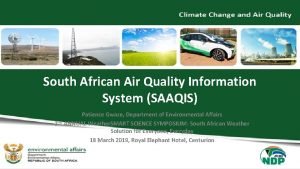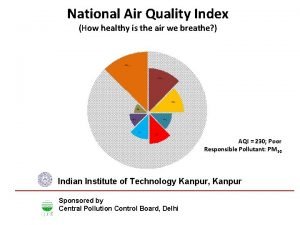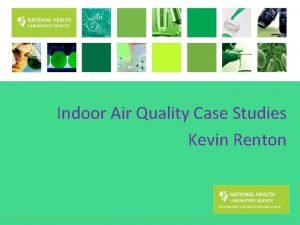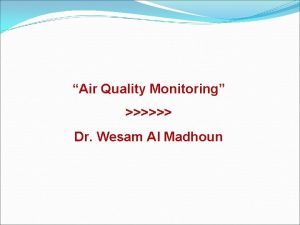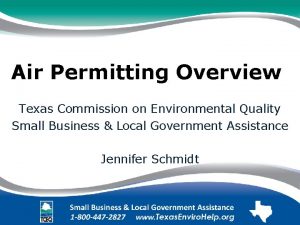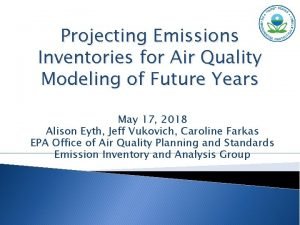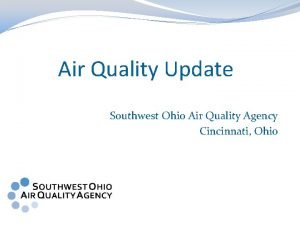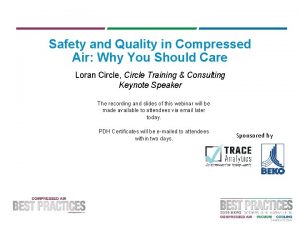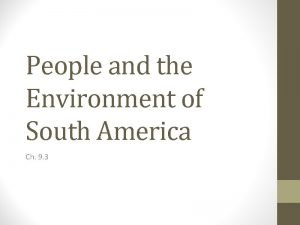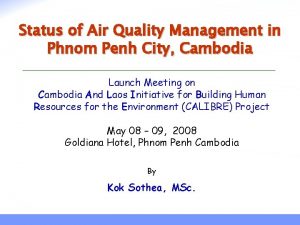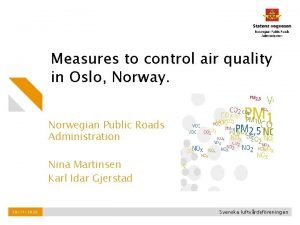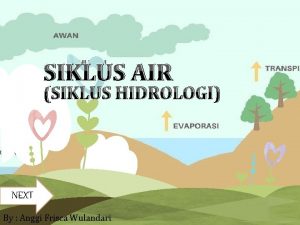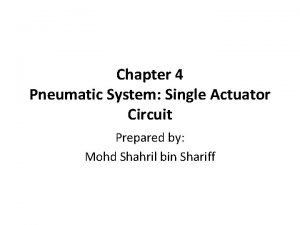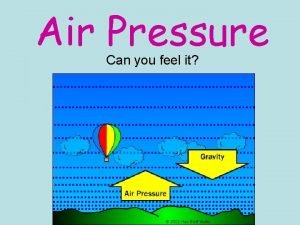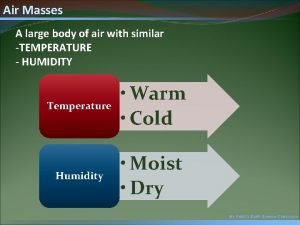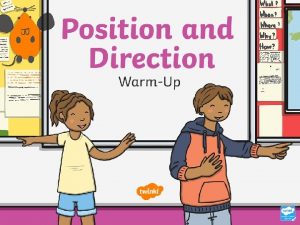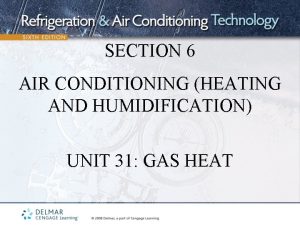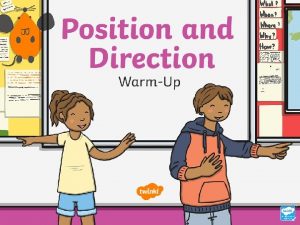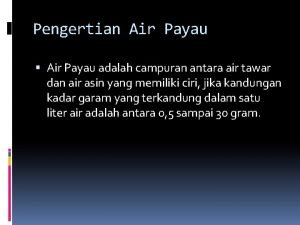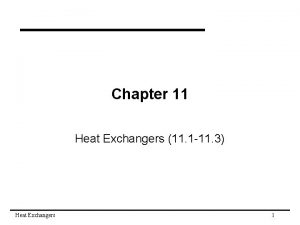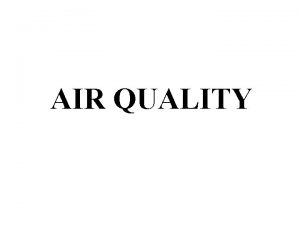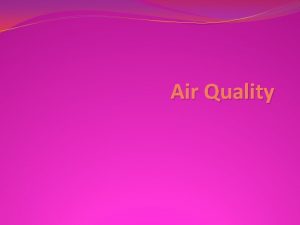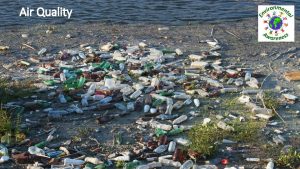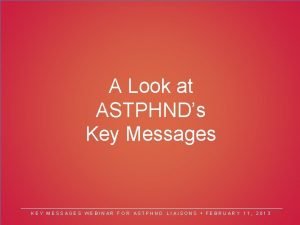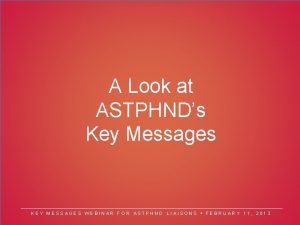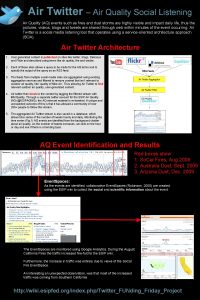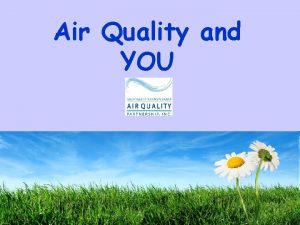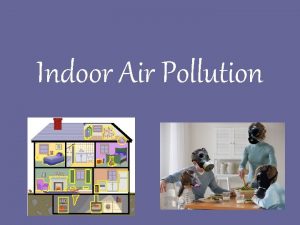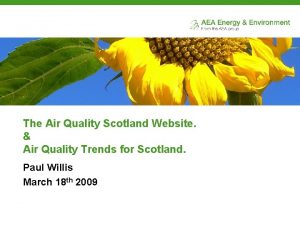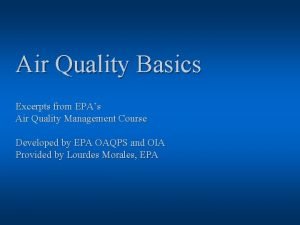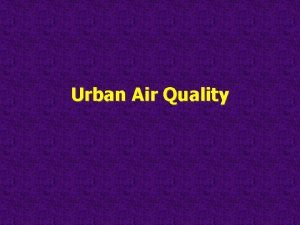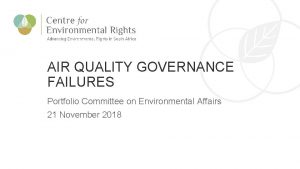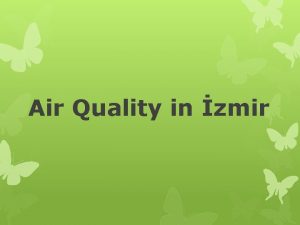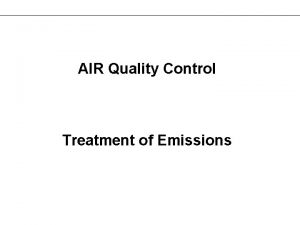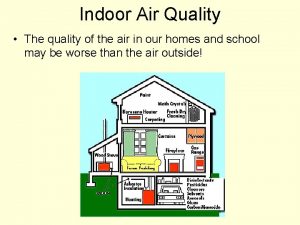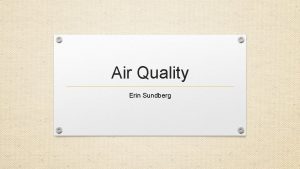Module 10 Air quality Key messages in Module









































- Slides: 41

Module 10: Air quality

Key messages in Module 10 • The mixtures of air pollutants produced by burning of fuels & by wildfires, can adversely affect human health directly & indirectly – Elevated concentrations of particulate matter & ozone cause significant mortality • Climate variability can influence air quality, resulting in adverse health consequences – Includes affects on aero-allergens like pollen • Reducing the sources of air pollutions would prevent avoidable premature mortality 2

1 Module 10 outline 2 3 4 Introduction to Exposures to air Health impacts air pollutants pollution of air pollution Benefits of air quality policies 3

1 INTRODUCTION TO AIR POLLUTANTS & THEIR 4

Air pollutants • • • Carbon monoxide (CO) Nitrogen dioxide (NO 2) Lead (Pb) Sulfur dioxide (SO 2) Particulate matter (PM 2. 5, PM 10) Ozone (O 3) Strong evidence for causal relationship between air pollution & premature death – Time series studies of acute effects – Cohort or cross-section studies of chronic effects 5

Carbon monoxide • Produced by incomplete combustion • Inhibits the capacity of blood to carry oxygen to organs & tissues • People with chronic heart disease may experience chest pain when CO levels are high • At very high levels, CO impairs vision, manual dexterity & learning ability, & can be fatal 6

Nitrogen dioxide • Produced from high-temperature combustion • Affects lung function in persons with asthma • Contributes to acid rain & secondary particle formation • Is a precursor of ground-level ozone 7

Sulfur dioxide • Emitted from combustion of sulfur-containing coal & oil, & from metal smelting operations – Emissions reduced using scrubbers • Contributes to acid rain & to formation of PM 2. 5 through atmospheric reactions • Associated with reversible declines in lung function of people with asthma, & exacerbates respiratory symptoms in sensitive individuals 8

Particulate matter (PM 2. 5, PM 10) • Can be primary or secondary – Produced by combustion, atmospheric reactions & mechanical processes • Associated with a wide range of human health impacts, including premature deaths • Higher temperatures may favor secondary formation • Some particle types contribute to climate warming, others to cooling 9

Ozone • Main pollutant responsible for photochemical smog – Formed via reactions in the atmosphere from primary pollutants (NOx & VOCs) in the presence of sunlight – Higher temperatures favor ozone formation • Ozone is also a greenhouse gas • Strong oxidant that damages cells lining the respiratory system, resulting in a variety of adverse health outcomes including lung function decrease, asthma attacks & premature death 10

Ground-level ozone formation Source: Queensland Government Environmental Protection Agency (2013) 11

2 EXPOSURE TO AIR POLLUTANTS 12

What are the main sources of air pollution exposure in your country? What is being done to manage these sources?

Multiple sources of air pollutants

Forest fires 15

Forest fires & temperature trends Data from Canada 1920 -1999: 5 -year Means Source: Gillett et al. (2004) 16

Annual PM 10 concentrations in Asian cities Source: Clean Air Initiative for Asian Cities (2010) 17

Average of annual average ambient air quality in 243 selected Asian cities Source: Clean Air Initiative for Asian Cities (2010) 18

% of population using solid fuels & annual mean air pollution levels Source: WHO (2012) 19

Pollen Change in pollination seasons & migration of birds & insects including bees & butterflies may affect the seasonality of allergy & asthma 20

Plants: Poison Ivy toxic oils Source: Climate Central 21

3 Health impacts of PM & ozone 22

Source: Air. Better. org 23

Air pollution effects on the developing respiratory system Source: UCLA Institute of the Environment & Sustainability 24

Time series analyses • Analyzes a series of daily observations of air pollution & health to determine short-term, acute effects • Widely used & economical approach, often utilizing readily-available data • Temporal studies avoid many of the confounding factors that can affect spatial studies • Time-varying factors may confound the pollution associations – Seasonal cycles, weather variables, day of week 25

Prospective cohort studies • Address long-term, chronic effects • Large populations in multiple cities enrolled & followed for many years to determine morbidity or mortality experience • Must control for “spatial” confounders, e. g. smoking, income, race, diet, occupation • Assessment of confounders at individual level is an advantage over cross-sectional, ecologic studies 26

Review of evidence • Review of evidence on health aspects of air pollution – REVIHAAP project (WHO EURO) available at: http: //euro. who. int/__data/assets/pdf_file/0004/19 3108/REVIHAAP-Final-technical-report-finalversion. pdf? ua=1 • City level data available at: http: //apps. who. int/gho/data/view. main. AMBIENTC ITY 2014? lang=en 27

Ambient air pollution attributable deaths in 2012, by WHO region Source: WHO Ambient air pollution attributable deaths Deaths in children under 5 years Deaths per 100, 000 capita Deaths in children under 5 years per 100, 000 936, 300 (761, 500 – 1, 257, 500) 40, 800 51 23 Western Pacific 1, 669, 400 (1, 289, 400 – 1, 955, 700) 14, 100 102 12 Global 3, 732, 500 (3, 187, 700 – 4, 290, 900) 126, 800 53 19 Southeast Asia

% childhood mortality due to air pollution Source: WHO (2012) 29

Climate change-induced changes in annual mean surface PM 2. 5 from 1981 - 2000 to 2081 - 2100 ug/m 3 Source: Fang et al. (2013) 30

Climate change-induced changes in annual mean surface O 3 from 1981 -2000 to 2081 -2100 (ppbv) Source: Fang et al. (2013) 31

Estimated change in premature mortality with changes in PM 2. 5 & O 3 PM 2. 5 O 3 Additional annual premature mortalities per 1, 000 km 2 Source: Fang et al. (2013) Future minus present Additional annual premature mortalities per million population 32

Atmospheric brown cloud Increases in concentrations of PM 2. 5 of 20 μg/m 3 could lead to about 340, 000 excess deaths per year in China & India Atmospheric brown haze is also altering regional weather, creating acid rain, & (perhaps) affecting forest & crop yields

4 Benefits of air quality policies 34

WHO air quality guidelines • PM 2. 5 – 10 μg/m 3 annual mean – 25 μg/m 3 24 -hour mean • PM 10 – 20 μg/m 3 annual mean – 50 μg/m 3 24 -hour mean • Ozone – 100 μg/m 3 8 -hour mean Source: WHO (2008) 35

WHO key facts on air pollution • Key sources of urban outdoor air pollution can be reduced by policies & investments supporting cleaner transport, energy-efficient housing, power generation, industry & better municipal waste management • Key rural & peri-urban air pollution sources can be reduced by decreasing outdoor emissions from household coal & biomass energy systems, agricultural waste incineration, forest fires & certain agro-forestry activities (e. g. charcoal production) 36

Co-benefits of avoided premature mortality from PM 2. 5 & O 3 in 2030, 2050, & 2100 Deaths per year per 1, 000 km 2 Deaths PM 2. 5 - cardiopulmonary disease plus lung cancer Ozone (O 3) – respiratory disease Source: West et al. (2013) 37

What we covered in Module 10 1 2 3 4 Introduction to Exposures to air Health impacts Benefits of air pollutants pollution of air pollution quality policies 38

Learning from Module 10 • The mixtures of air pollutants produced by burning of fuels & by wildfires, can adversely affect human health directly & indirectly – Elevated concentrations of articulate matter & ozone cause significant mortality • Climate variability can influence air quality, resulting in adverse health consequences – Includes affects on aero-allergens like pollen • Reducing the sources of air pollutions would prevent avoidable premature mortality 39

What action will you take in your work, given what you learnt in Module 10?

Coming up next… Module 16: Communicating climate change & health 41
 Hubungan air tanah dan tanaman
Hubungan air tanah dan tanaman Key partners business model canvas
Key partners business model canvas Contoh bisnis model canvas makanan pdf
Contoh bisnis model canvas makanan pdf Pyq 10
Pyq 10 Quality assurance vs quality control
Quality assurance vs quality control Pmp quality management
Pmp quality management Quality metrics pmp
Quality metrics pmp Quality assurance model in nursing
Quality assurance model in nursing Quality improvement vs quality assurance
Quality improvement vs quality assurance Basic concept of quality control and quality assurance pdf
Basic concept of quality control and quality assurance pdf Management gurus and their contributions
Management gurus and their contributions Crosby's fourteen steps to quality improvement
Crosby's fourteen steps to quality improvement Old quality vs new quality
Old quality vs new quality Quality assurance module
Quality assurance module Saaqis
Saaqis Air quality index calculation
Air quality index calculation Air quality renton
Air quality renton Ambient air quality standards
Ambient air quality standards St louis air quality
St louis air quality Tceq pbr
Tceq pbr Air quality
Air quality Southwest ohio air quality
Southwest ohio air quality Air quality
Air quality Sao paulo air quality
Sao paulo air quality Air quality phnom penh
Air quality phnom penh Oslo air quality
Oslo air quality Tulare air quality
Tulare air quality C device module module 1
C device module module 1 Civil air patrol aerospace module 1
Civil air patrol aerospace module 1 Air hujan sanggup menjadi air tanah lantaran proses
Air hujan sanggup menjadi air tanah lantaran proses Urutan kelarutan perak halida dalam pelarut air
Urutan kelarutan perak halida dalam pelarut air Indirect control of single acting cylinder
Indirect control of single acting cylinder Chapter 12 section 1 what causes air pollution
Chapter 12 section 1 what causes air pollution Can you feel it in the air in the air
Can you feel it in the air in the air An air mass is a large body of air with
An air mass is a large body of air with Two cold air masses converge on a warm air mass
Two cold air masses converge on a warm air mass Put your right hand in the air
Put your right hand in the air All kinds of shapes
All kinds of shapes Return air and supply air
Return air and supply air Right hand in the air left hand in the air
Right hand in the air left hand in the air Air payau adalah campuran dari
Air payau adalah campuran dari Tubular heat exchanger
Tubular heat exchanger














